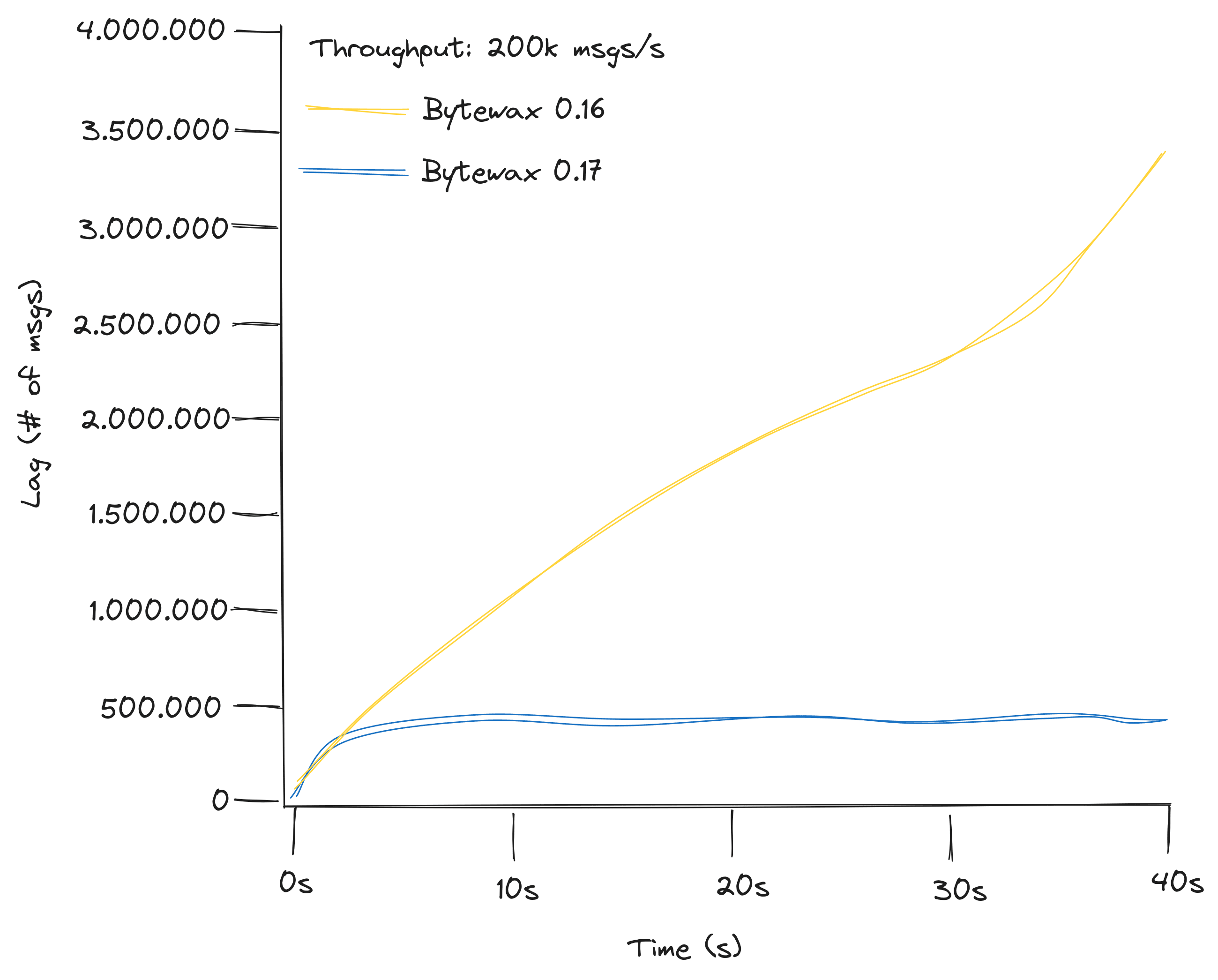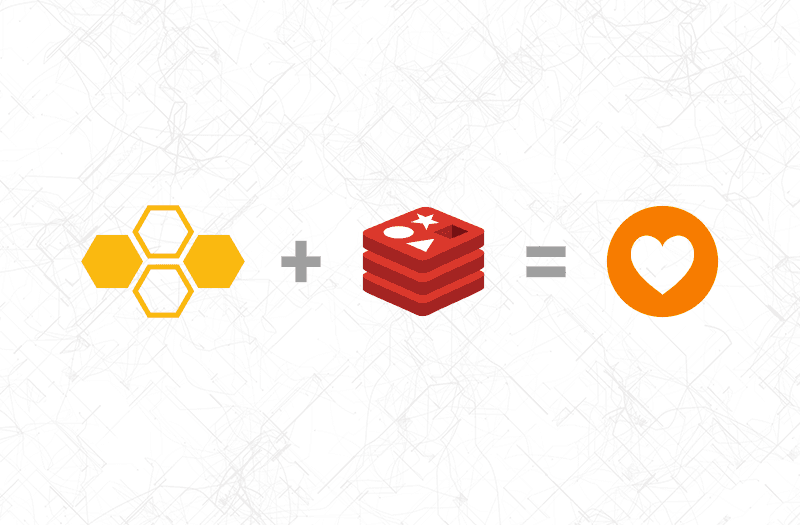

Can I scale Bytewax dataflows without losing any data or having to recompute all of my stateful transformations?
YES! - Bytewax has rescaling capabilities since 0.17. This post will dive into how rescaling works behind the scenes to support the ability to scale dataflow workers without losing any of the data accumulated in state for windows and aggregations.
Sometimes a production system ends up needing more or less CPU or memory or network bandwidth than originally provisioned. Horizontal rescaling refers to adding or removing workers from a cluster-based system to change the amount of computational resources available to a system.
In this article, we're going to do a deep-dive into Bytewax's rescaling functionality, allowing you to change the number of workers contributing computational resources to a dataflow cluster. Bytewax currently supports stop-start rescaling where the rescaling operation happens as part of resuming a dataflow after briefly stopping it.
This article can be informative even if you are not using Bytewax: the techniques for distributing state described here can be used in the design of other systems.
The core challenge to implementing rescaling in a streaming dataflow system is re-distributing state across workers. To build up to that, let's start with a quick overview of how Bytewax manages state and recovery data in an already executing dataflow.
State Locations
Bytewax is built atop Timely Dataflow, a distributed dataflow execution engine written in Rust. Thus, it inherits Timely's base execution model: a set of identical workers that each contribute to running all dataflow operators.
Here's a diagram of an example dataflow with a stateless input reading data, transforming it via a single (stateless) map step, and writing it out to a stateless output.
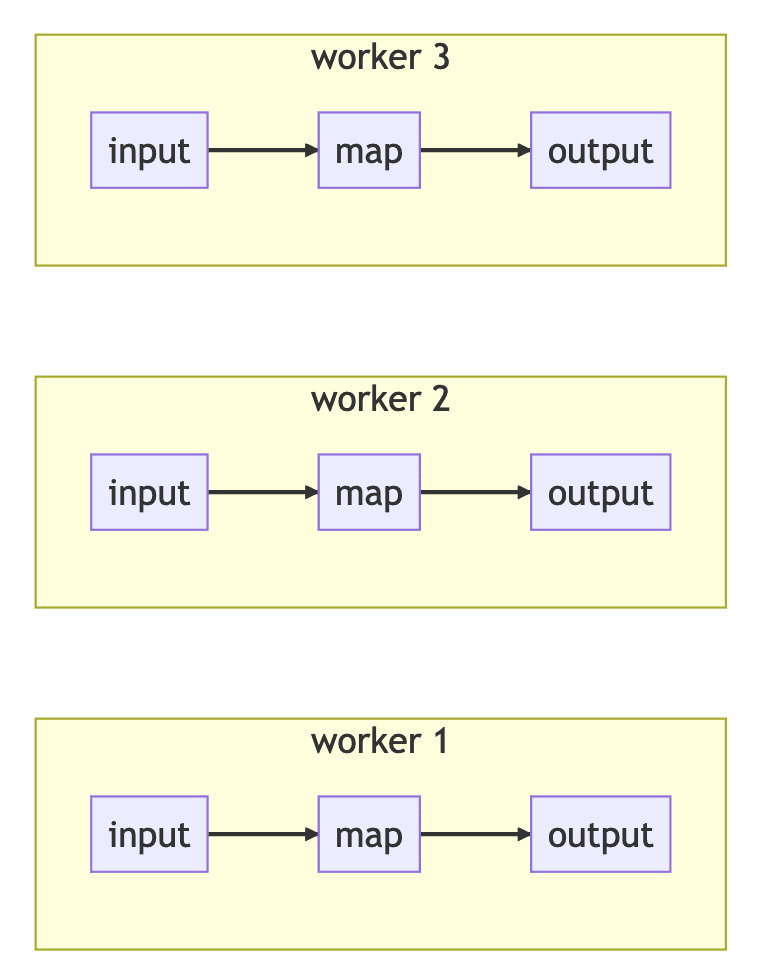
State with each stateful operator (for example, reduce) is partitioned by a state key, with a single worker being assigned the primary worker for each key, and all incoming items for that key routed to the primary worker. (This is why all stateful Bytewax operators take (key, value) 2-tuples as their input upstream.) Having a single primary worker allows state changes within a key to be a localized / non-distributed problem.
This routing means that items might need to be serialized and exchanged to a different worker before processing.
Here's a diagram of an example dataflow with a stateless input reading data, transforming it via a single stateful reduce step, and writing it out to a stateless output.
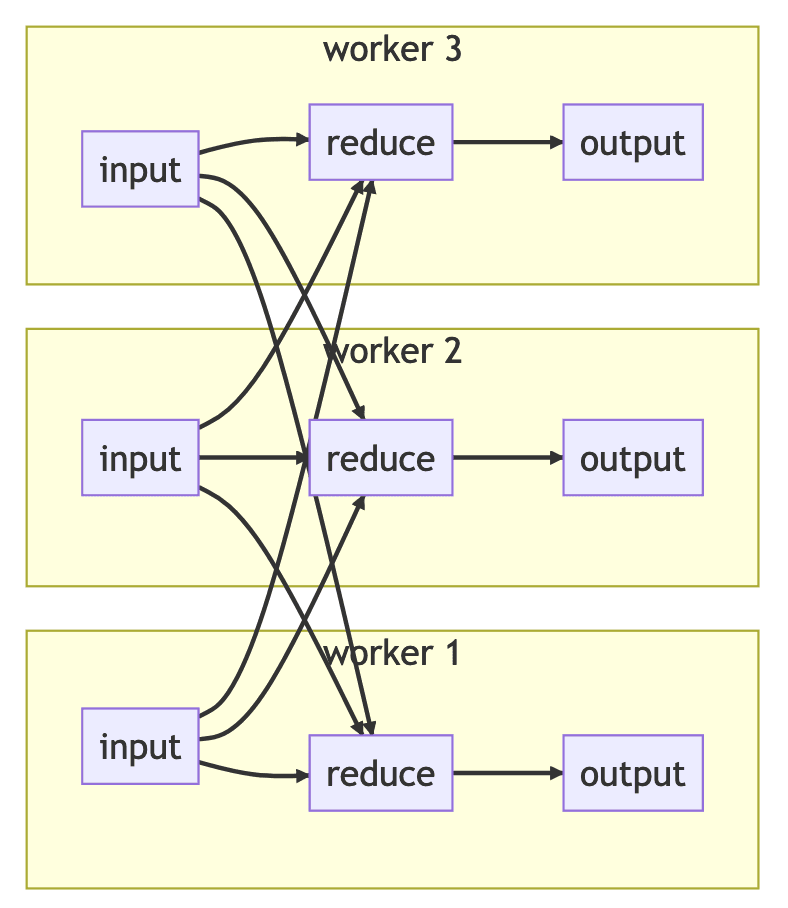
To simplify our dataflow diagrams, labeling a dataflow edge with ⧖ means items flowing on this edge will be moved to the relevant worker.
The previous dataflow diagram is thus equivalent to the following:
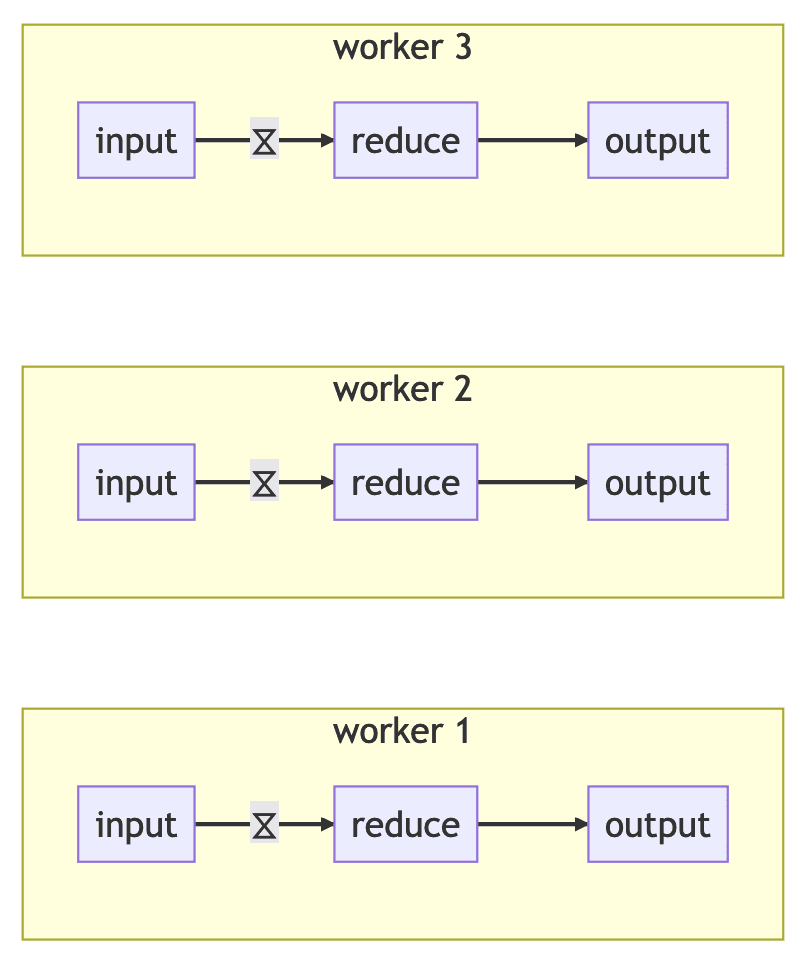
Partitioned Primary Assignment
For non-IO stateful operators where the state needs no special environment, primary workers are assigned by hashing the state key, and so any worker in a given cluster could be primary for the key.
For partitioned input and output operators, partitions might not be globally accessible from all workers (e.g. each worker runs on separate machine and has access to a distinct CSV file for input), so primary workers are assigned: all workers initially broadcast what partitions they have access to, the first worker of the cluster looks at all of the access reports, the first worker uses an algorithm to decide which worker with access to a partition is primary, then it broadcasts the primary assignments to all workers. The primary workers for each partition will then open the partition for reading and writing, and in the output case, will be marked as the routing destination for items to be written to that partition.
For example, if we had a dataflow that was reading from a Kafka topic with five partitions, the resulting dataflow input components could look like:
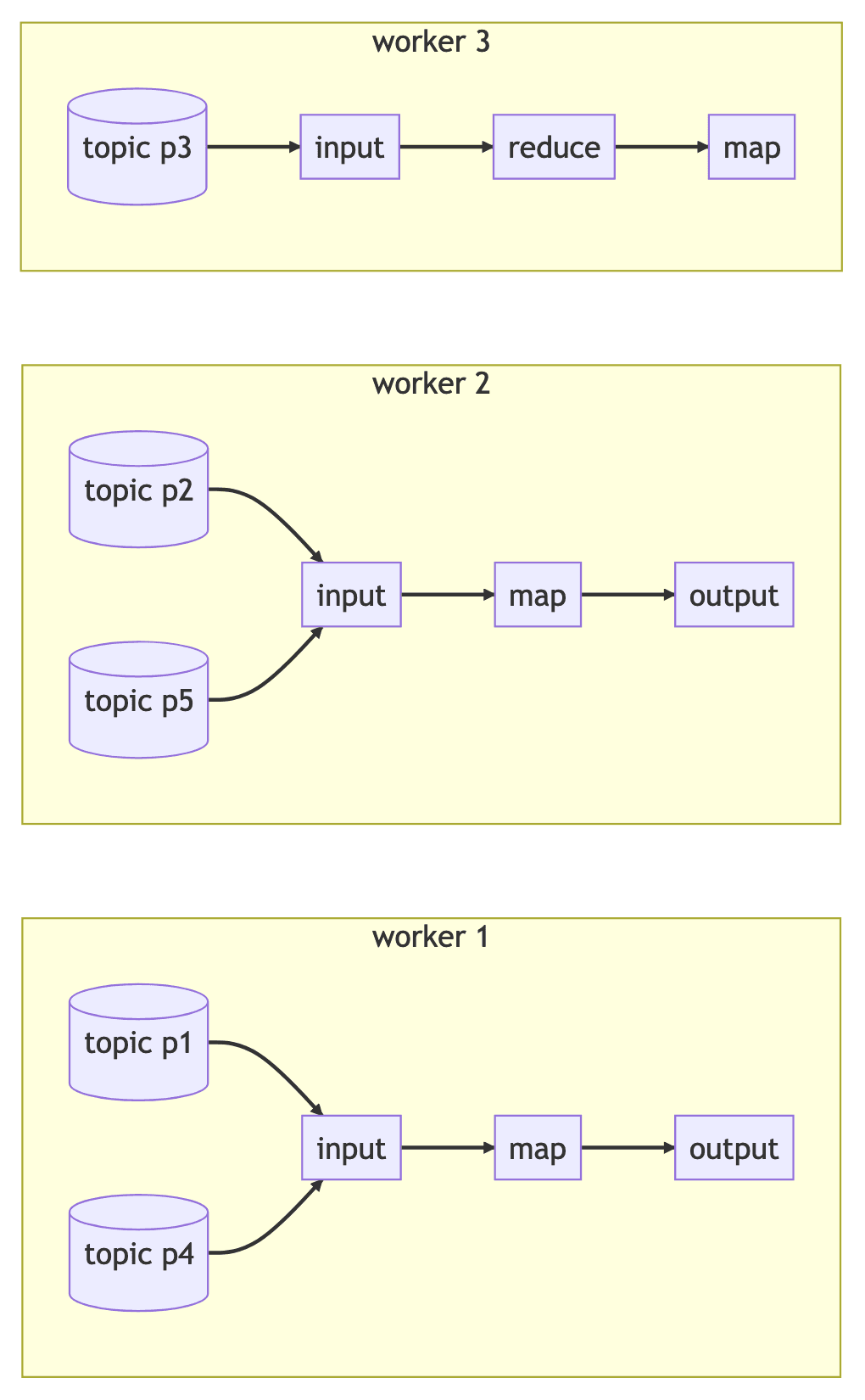
To simplify our dataflow diagrams, labeling a dataflow edge with ⍷ means that the partitions of the input or output source are distributed among workers with access to that partition.
The previous dataflow diagram is thus equivalent to the following:

In every case, the important thing to remember is that only a single worker manages state for a key.
Snapshot Running State
Dataflow recovery is the process of quickly resuming the output of a stateful dataflow from an interruption without needing to re-process all input data. While running a dataflow, Bytewax periodically snapshots all state and writes these snapshots to a fixed set of sharded SQLite databases called recovery partitions on durable storage. Recovery partitions outlive any specific dataflow execution cluster, a fixed number of them are created before the dataflow is executed for the first time.
The snapshot output behaves similar to a normal partitioned output of the dataflow: a worker is elected the primary for each recovery partition and snapshot data is routed to the worker that manages the writes for the relevant key on the snapshot data.

Resuming is Rescaling
When resuming a dataflow, the snapshot data is loaded before any of the input data in order to restore all stateful step's state. The snapshot input behaves similar to a normal partitioned input of the dataflow: a worker is elected the primary reader for each recovery partition and starts reading that partition's snapshots.
Each stateful operator has a second snapshot input which takes in these loaded snapshots on resume. These snapshots are routed using the same mapping as the upstream items into the operator, and this is the trick that enables start-stop rescaling: both resume state and items are routed to the worker in the new cluster that will be handling that state key. This does not need to be the same worker as in the previous execution.

As an explicitly worked out example without the ⍷ shorthand, if we had a dataflow execution of three workers, periodically writing out state snapshots to two recovery partitions:
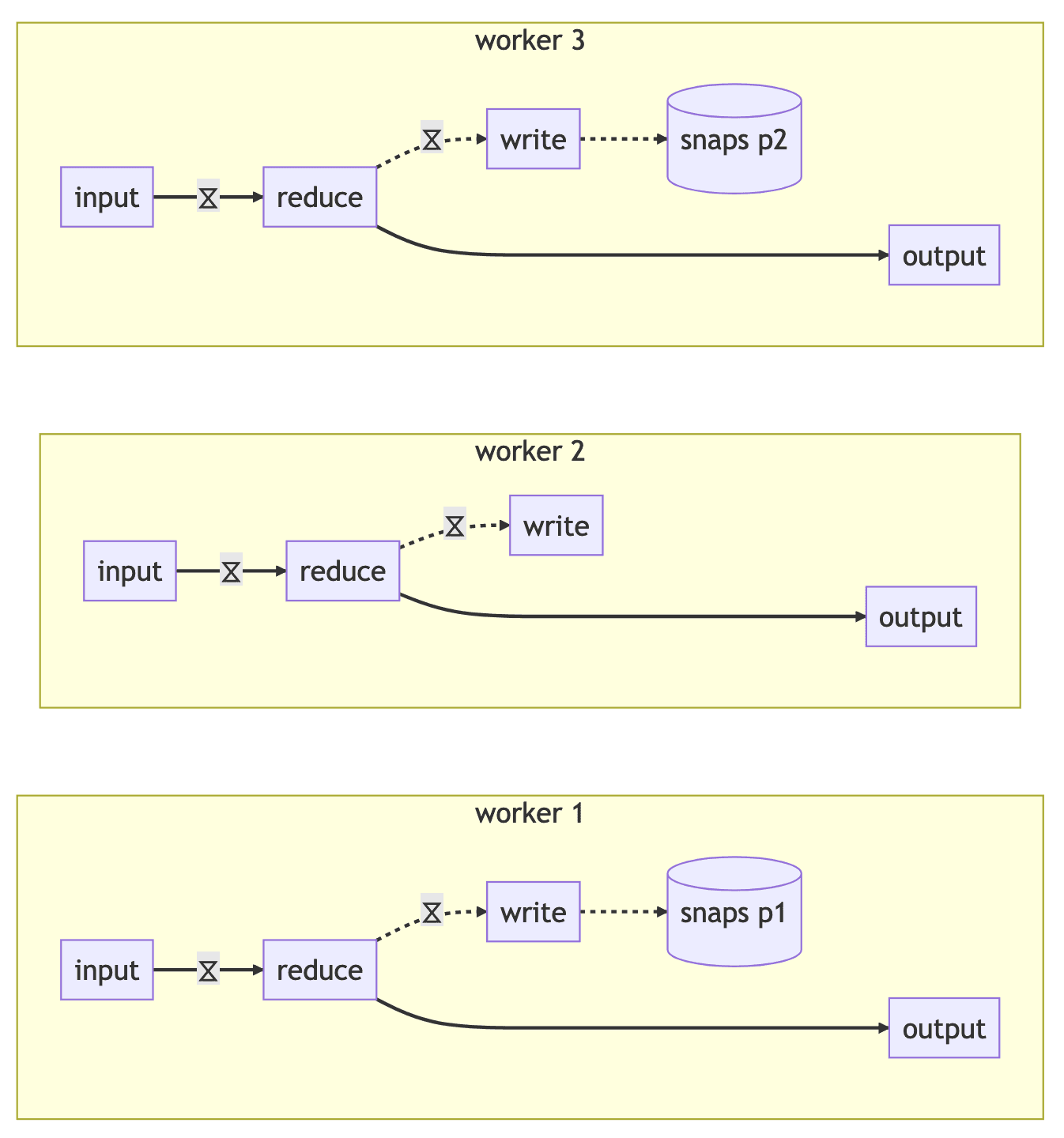
Then we stop that execution and start a new one with four workers but the same two recovery partitions, the workers will collaborate on reading the snapshots and routing them to the new workers that need to manage that state:
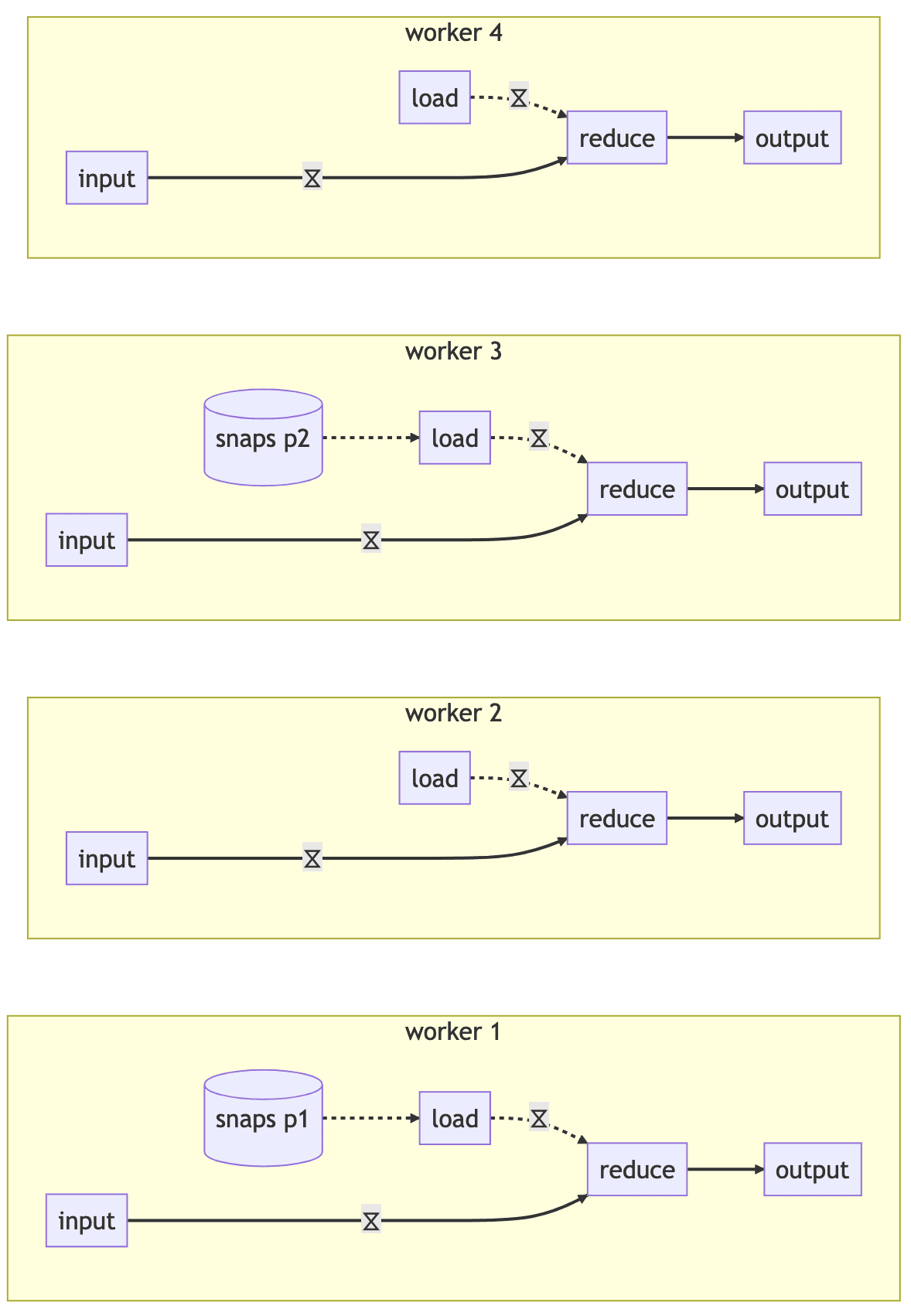
Conclusion
It can be difficult to predict your production dataflow's long-term resource needs as your project evolves. Thankfully, Bytewax has the ability to rescale a streaming dataflow cluster to adjust available computational resources, while retaining state and not needing to re-process all historical data.
The combination of three features enables start-stop rescaling in Bytewax:
- State snapshots are routed in a consistent way to a fixed number of recovery partitions, regardless of cluster size.
- The primary assignment system that allow distributed reading and writing of recovery partitions.
- Loaded snapshots and incoming data are routed using the same keys so state is re-distributed across a new execution cluster correctly.
Hopefully, rescaling will be a useful tool for ensuring your dataflows have a long and productive life in production.
New to Bytewax? Check out the bytewax repository to get started creating streaming data pipelines and dont forget to give us a star
How We Found 10x Performance While Reducing CPU Consumption in Bytewax v0.17


